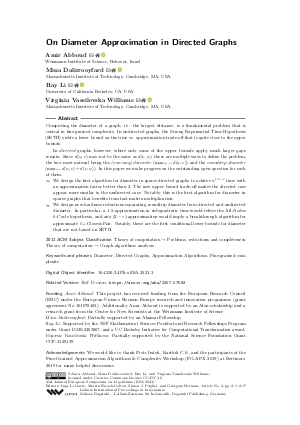LIPIcs.ESA.2023.2.pdf
- Filesize: 0.87 MB
- 17 pages

 Creative Commons Attribution 4.0 International license
Creative Commons Attribution 4.0 International license



































Feedback for Dagstuhl Publishing